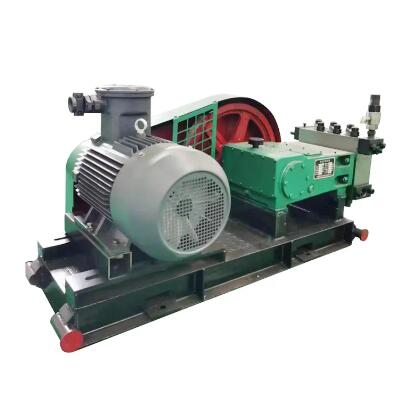How Digitally Controlled Diaphragm Pumps are Enhancing Process Automation
2024-08-23
Introduction
Automation is a driving force in modern industry, helping companies improve efficiency, reduce costs, and maintain high levels of precision. Among the many tools enabling this shift towards greater automation are digitally controlled diaphragm pumps. In this blog, we will explore how these advanced pumps are contributing to process automation and why they are becoming indispensable in industries where precision fluid management is crucial.
The Role of Digitally Controlled Diaphragm Pumps in Automation
Digitally controlled diaphragm pumps are an essential component in automated systems that require precise fluid control. Unlike traditional pumps, which rely on mechanical controls, these pumps use digital electronics to control various aspects of their operation. This digital control allows the pumps to be easily integrated into automated systems, where they can be programmed to perform specific tasks with minimal human intervention.
Benefits of Integrating Digitally Controlled Diaphragm Pumps in Automated Systems
1. Precision and Consistency: Automation requires precision, and digitally controlled diaphragm pumps excel in this area. They can deliver fluids with exact flow rates and volumes, ensuring that processes are consistent and repeatable. This level of precision is particularly important in industries like pharmaceuticals, where even minor deviations can affect product quality.
2. Remote Control and Monitoring: One of the key advantages of digital control is the ability to monitor and control pumps remotely. This capability is invaluable in automated systems, allowing operators to adjust settings, monitor performance, and respond to issues without needing to be physically present. This remote functionality is particularly useful in large facilities or in processes that require continuous monitoring.
3. Integration with Other Systems: Digitally controlled diaphragm pumps can be easily integrated with other automated systems, such as programmable logic controllers (PLCs) and supervisory control and data acquisition (SCADA) systems. This integration allows for seamless operation within a larger automated framework, enabling synchronized control of multiple processes.
4. Scalability: As production needs change, the flexibility of digitally controlled diaphragm pumps makes it easy to scale operations up or down. The pumps can be reprogrammed to meet new requirements without needing significant hardware changes, making them a cost-effective solution for growing businesses.
5. Energy Efficiency and Cost Savings: Automation often leads to improved energy efficiency, and digitally controlled diaphragm pumps are no exception. These pumps can be programmed to operate at optimal levels, reducing energy consumption and lowering operating costs. Over time, the savings from reduced energy use and lower maintenance requirements can be substantial.
6. Improved Safety: In industries where hazardous chemicals or sensitive materials are handled, safety is a top priority. Digitally controlled diaphragm pumps can be programmed to follow strict safety protocols, such as automatic shutdowns in the event of a malfunction, reducing the risk of accidents.
Case Studies: Real-World Applications of Digitally Controlled Diaphragm Pumps
- Chemical Manufacturing: In chemical manufacturing, digitally controlled diaphragm pumps are used to precisely dose chemicals into reactors. The ability to control the pumps remotely and integrate them with other automated systems ensures that the process runs smoothly, with minimal risk of human error.
- Water Treatment: Water treatment facilities often rely on these pumps for dosing chemicals like chlorine and fluoride. The precision and reliability of digitally controlled diaphragm pumps ensure that the water is treated to the required standards, while automation reduces the need for manual oversight.
- Pharmaceutical Production: In pharmaceutical production, these pumps are used to deliver accurate doses of ingredients into mixing tanks. The pumps’ ability to maintain consistent flow rates and volumes is critical for ensuring that each batch of medication meets the necessary quality standards.
Conclusion
As industries continue to embrace automation, the role of digitally controlled diaphragm pumps is becoming increasingly important. Their precision, flexibility, and ability to integrate with other automated systems make them a valuable asset in any operation that requires precise fluid management. By enhancing process automation, these pumps are helping companies improve efficiency, reduce costs, and maintain the highest standards of quality.



